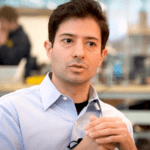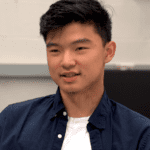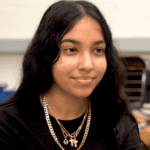Morphable Aerial Drones: Building Simulators and Hardware
University of Michigan researcher Vasileios Tzoumas is using his aerospace engineering and science expertise to mentor students from Undergraduate Research Opportunity Program to develop the next generation of drone technology. The goal is to meet societal needs by developing morphable drones that are efficient during takeoff, maneuvering, and landing, resilient against the elements of nature, and agile in cluttered and dynamic environments.
“We have the responsibility and the duty to include students. They have done an amazing job and I’m proud and impressed by their participation in the project.”
The University of Michigan Undergraduate Research Opportunity Program (UROP) gives students a chance to learn about the research process and create relationships with world-class faculty while working on innovative projects. Mentors benefit from the fresh perspectives and novel approaches that students bring to the research.
 Vasileios Tzoumas, Mentor, Assistant Professor, Department of Aerospace Engineering
Vasileios Tzoumas, Mentor, Assistant Professor, Department of Aerospace Engineering
Vasileios Tzoumas, assistant professor in aerospace engineering and a member of the Robotics Institute, joined the university in Fall 2021 and immediately signed up to be a UROP mentor.
He is currently working with a group of undergraduates on his project, Morphable Aerial Drones: Building Simulators and Hardware.
“They have been the leaders in the project, leading both the hardware design and the building of the hardware in terms of 3D printing and assembling all the components.”
Tzoumas received his Ph.D. in electrical and systems engineering at the University of Pennsylvania. His research is focused on how to design robots to accomplish specific tasks, as well as creating collaborative autonomy, bringing multiple robots with heterogeneous capabilities together to perform tasks. In this project, he is creating morphable drones to show how novel hardware can enhance the capabilities and performance of robots to perform collaborative tasks.
The value that undergraduates added to the project, bringing in new ideas and a lack of fear of failure, is much appreciated by Tzoumas. He also emphasized the importance of open communication and collaborative culture where everyone feels they can voice their opinions and criticisms and students are able to receive hands-on experience in research.
“We have the responsibility and the duty to include students. They have done an amazing job and I’m proud and impressed by their participation in the project.”
 Andrew Zhao, Class of ‘25
Andrew Zhao, Class of ‘25
Working with UROP has allowed Andrew Zhao to explore his passion for all things that fly.
“I was always mesmerized by planes, rockets, anything. I would always be reading and wanting to learn more. So seeing all the work that the Aerospace Department has done and the research that they’re doing to push the aerospace field further, that’s what really got me interested in aerospace research.”
He contributes to the research by integrating the plans designed collectively by the group into one coherent drone.
Zhou has found that one of the primary benefits of joining UROP was the connection he was able to make with his mentor.
“I often think that it can be very intimidating for freshmen coming into college, especially because coming out of high school, they don’t necessarily know how to connect with someone who may be as seemingly intimidating as a professor. UROP is really bridging that gap.”
After his participation with UROP ends, Zhou will be staying on the project via the Summer Undergraduate Research in Engineering (SURE) Program.
“This project really solidified my interest in research. Before, I was mainly interested in industry, but this introduced me to the academic world and showed me how many different paths I could take.”
 Monica Khalique, Class of ’24
Monica Khalique, Class of ’24
This is Monica Khalique’s second year researching with UROP. During her freshman year at U-M, she worked on a life sciences project, but before learning about the program, she hadn’t previously considered becoming involved in research.
“Being able to work with professors and all the resources the university is able to provide for us to do this research is what really keeps me going and wanting to do research. And what led me to join for the second time.”
Her research work began with the drone’s flight simulator software, testing how the drone will work in different conditions and react to obstacles. During the year, she became interested in the hardware side, learning with her fellow researchers how to build and equip the drone prototypes with different kinds of materials and new methods of production, like 3D printers.
Khalique appreciates how her experiences as an undergraduate researcher contributed to her classroom learning experience, as well as what it taught her about working within the research community. The project also motivated her to switch from a program of study in the life sciences to aerospace engineering.
“I never thought coming into college in a class with hundreds of students, I would be able to make a close connection with the professor and work with them on the real things that they’re doing that’s making a huge impact on the world.”

 Vasileios Tzoumas, Mentor, Assistant Professor, Department of Aerospace Engineering
Vasileios Tzoumas, Mentor, Assistant Professor, Department of Aerospace Engineering Andrew Zhao, Class of ‘25
Andrew Zhao, Class of ‘25  Monica Khalique, Class of ’24
Monica Khalique, Class of ’24